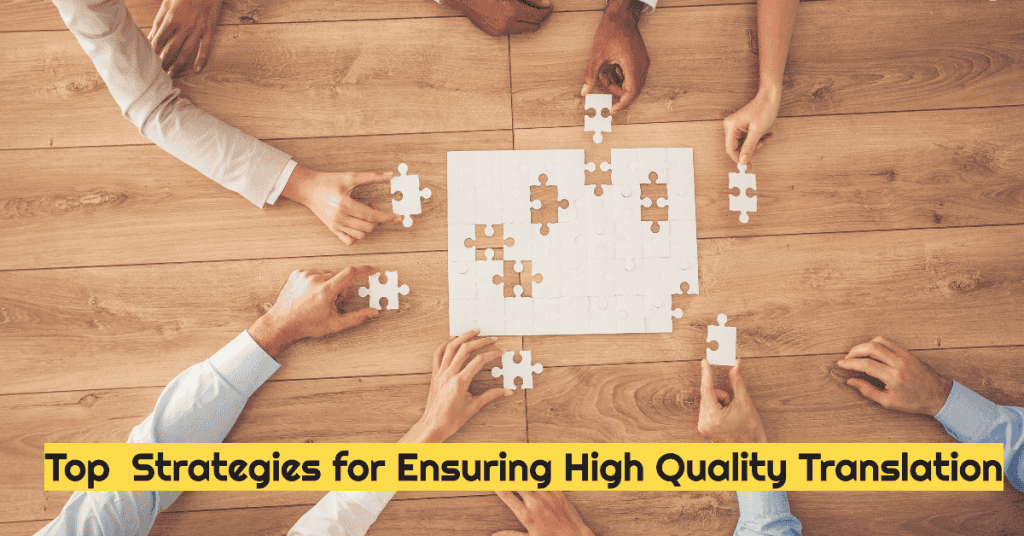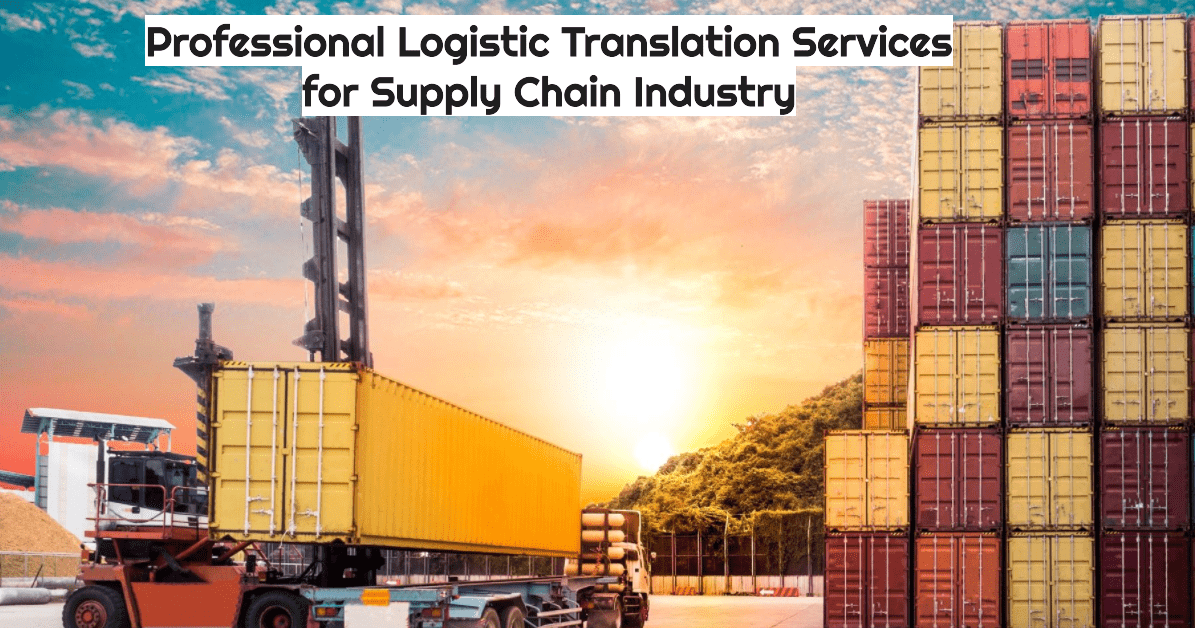Top Strategies to Ensure High Quality Translation
In today’s interconnected world, businesses are increasingly expanding their reach beyond national borders. However, effective communication across linguistic and cultural barriers is crucial for success. This is where high-quality translation comes into play.
Translation is more than just swapping words; it’s about conveying the intended message, tone, and cultural nuances accurately and effectively. Poor translations can lead to misunderstandings, misinterpretations, and even damage a brand’s reputation.
On the other hand, high-quality translations build trust, enhance communication, and open doors to new markets.
Achieving this level of quality requires a systematic approach, a focus on detail, and a commitment to excellence.
This article will explore key strategies to ensure your translations are not only accurate but also culturally relevant and impactful.
I. The Foundation: Preparing for Success
A strong foundation is crucial for any successful translation project. This begins with a well-prepared source text. A clear and concise source text is paramount for accurate translation. Using simple, direct language, avoiding jargon, and minimizing complex sentence structures significantly aids the translator. Maintaining consistent terminology and style throughout the document ensures clarity and prevents confusion. Thorough proofreading and editing are essential to eliminate grammatical errors, inconsistencies, and any ambiguities that could hinder the translation process.
Providing clear and specific instructions to translators is vital for a successful project. Clearly define the target audience, considering their demographic characteristics, language proficiency, and cultural background. Outline the purpose of the translation and the desired outcome, whether it’s for informational purposes, marketing materials, legal documents, or other specific objectives. Specify preferred terminology, style guidelines, and formatting instructions to ensure consistency and maintain brand identity. Additionally, provide any relevant cultural considerations or sensitivities to guide the translator in their approach.
Developing and maintaining glossaries and brand guides is essential for consistent and high-quality translations. These resources establish preferred terminology, writing styles, and brand voice, ensuring consistent messaging across all translation projects. By adhering to these guidelines, businesses can maintain brand consistency and ensure that their message is accurately and effectively conveyed to target audiences worldwide.
II. Empowering Translators for Excellence
High-quality translations require skilled and knowledgeable translators. Translators must have an excellent command of both the source and target languages. Continuous learning and staying updated with linguistic developments are crucial for maintaining accuracy and fluency.
Providing translators with examples of previous translations is invaluable. These examples demonstrate the desired style, tone, and terminology, giving translators a clear understanding of the client’s expectations. Including examples from various document types provides a comprehensive overview of the desired style and tone across different contexts.
Collaborating with Subject Matter Experts (SMEs) is crucial for ensuring accuracy and addressing industry-specific nuances. SMEs provide valuable insights into industry-specific terminology and concepts, clarifying complex terms and ensuring that the translation accurately reflects the intended meaning. Open communication between SMEs and translators is essential for a successful collaboration.
Encouraging continuous learning among translators is vital for maintaining high-quality standards. This can be achieved through training sessions, workshops, and conferences that focus on the latest industry best practices, emerging technologies, and cultural nuances.
III. Leveraging Technology for Enhanced Efficiency
Technology can significantly enhance translation efficiency and quality. Computer-Assisted Translation (CAT) tools and translation memory software can improve efficiency and maintain consistency. However, it’s crucial to remember that these tools should be used to aid, not replace, human expertise. Translation memory tools store previously translated content, enabling efficient reuse and maintaining consistency across projects.
Training the translation engine with domain-specific data significantly improves accuracy and contextually appropriate translations. By feeding the engine with relevant data, businesses can ensure that the translations are tailored to their specific industry and terminology.
Automated Quality Assurance (QA) tools can play a valuable role in the translation process. These tools can verify numerical accuracy, identify untranslated segments, and check for basic grammatical errors. While these tools provide a first layer of review, human expertise is still essential for ensuring the highest quality.
IV. The Crucial Role of Quality Assurance
A robust quality assurance (QA) process is paramount for achieving high-quality translations. A typical QA process involves three key steps:
- Proofreading: This step focuses on identifying and correcting spelling, grammar, and punctuation errors.
- Editing: This involves a more in-depth review, assessing the overall coherence, clarity, and style of the translation.
- Reviewing by a Second Linguist: This step provides an independent assessment of the translation, ensuring accuracy, consistency, and providing valuable feedback.
Even when using automated translation, post-editing is essential. An initial light edit is followed by a thorough review for fluency and readability, ensuring that the final translation is of the highest quality.
Style guides provide detailed instructions on tone, voice, and formatting. Adhering to style guides ensures consistency and maintains brand identity across all translated materials.
Real-time feedback loops between translators, editors, and the MT engine can significantly improve quality and help the system learn from its mistakes. This iterative process leads to continuous improvement and higher-quality translations over time.
A final check for linguistic accuracy, formatting consistency, and cultural appropriateness is crucial before delivering the final translation. This ensures that the translation is not only accurate but also culturally sensitive and effectively communicates the intended message to the target audience.
V. Localisation and Cultural Sensitivity
Localisation goes beyond simple word-for-word translation. It’s the process of adapting a product or content to a specific target market, taking into account cultural, social, and linguistic nuances. This involves more than just language translation; it encompasses a range of considerations:
Understanding and respecting the target market’s cultural norms, values, and beliefs is paramount. What may be acceptable in one culture might be offensive or inappropriate in another. For example, humor, imagery, and even colors can carry different meanings across cultures.
It’s crucial to be aware of the social and political context of the target market. Avoid using language or imagery that could be seen as insensitive or offensive within that specific context.
Consider local customs and traditions when adapting content. For example, greetings, gestures, and gift-giving practices vary significantly across cultures.
Adapt formatting and layout to suit the target market’s reading habits and preferences. For example, reading direction (left-to-right vs. right-to-left) and preferred font styles can vary significantly.
Incorporate local dialects and idioms where appropriate to enhance the natural flow and cultural relevance of the translation.
By carefully considering these factors, businesses can create localized content that resonates with the target audience, builds trust, and fosters stronger relationships.
VI. Build Long-Term Relationships with Language Partners
Building and nurturing long-term relationships with trusted language partners offers numerous benefits:
Over time, language partners gain a deep understanding of your brand, style, and specific requirements. This knowledge allows them to deliver more consistent and higher-quality translations that align perfectly with your brand voice.
Established relationships streamline communication and project management. This leads to faster turnaround times, reduced project costs, and improved overall efficiency.
Long-term partnerships foster open communication and collaboration. This allows for better project planning, proactive problem-solving, and a more seamless translation process.
By working with the same language partners, you gain access to their specialized knowledge and expertise in your industry or specific subject matter.
Strong relationships are built on trust and mutual understanding. Long-term partnerships foster a more collaborative and supportive environment, leading to stronger working relationships and improved outcomes.
By investing in long-term relationships with reliable language partners, businesses can significantly enhance the quality, efficiency, and overall success of their global communication efforts.
High Quality Translations Lead to Greater Business Success
Achieving high-quality translations requires a multi-faceted approach.
Preparing a solid foundation is crucial. Ensuring source text quality, by using clear and concise language, avoiding jargon, and maintaining consistency, significantly improves the accuracy of the translation. Providing clear and specific instructions to translators, including target audience, purpose, and desired style, ensures that their work aligns with your vision. Utilizing glossaries and brand guides establishes consistent terminology and maintains brand identity across all translated materials.
Empowering translators is key to success. Fostering their expertise by providing access to relevant resources and encouraging continuous learning ensures that they are equipped to deliver high-quality work. Providing them with examples of previous translations helps them understand the desired style and tone. Collaborating with Subject Matter Experts (SMEs) ensures accuracy and addresses industry-specific nuances effectively.
Leveraging technology effectively can significantly enhance the translation process. Utilizing CAT tools and translation memory software improves efficiency and consistency. Selecting the right translation engine for your specific needs and training it with domain-specific data improves accuracy and contextually appropriate translations. Implementing automated quality checks provides an initial layer of review and helps identify potential issues early on.
Implementing a robust QA process is paramount. Conducting thorough proofreading, editing, and reviews by independent linguists ensures that the translation is accurate, consistent, and of the highest quality. Utilizing post-editing addresses any remaining issues and ensures fluency and readability. Adhering to style guides maintains brand consistency and ensures that the translated content aligns with your brand identity. Implementing real-time feedback loops between translators, editors, and the MT engine fosters continuous improvement and helps the system learn from its mistakes.
Prioritizing localization and cultural sensitivity is crucial for effective communication. Adapting content to local markets, considering cultural norms and values, and ensuring cultural sensitivity in all aspects of the translation process ensures that the message resonates with the target audience and avoids any unintentional offense.
Building strong relationships with language partners offers numerous benefits. These relationships foster trust, streamline communication, and improve efficiency. Long-term partners gain a deep understanding of your brand and requirements, leading to more consistent and higher-quality translations.
By implementing these strategies, businesses can significantly enhance their global communication efforts. These strategies contribute to better translation quality, improved brand consistency, and increased customer satisfaction. Ultimately, high-quality translations are crucial for building trust, expanding market reach, and achieving sustainable business growth in the global marketplace.




